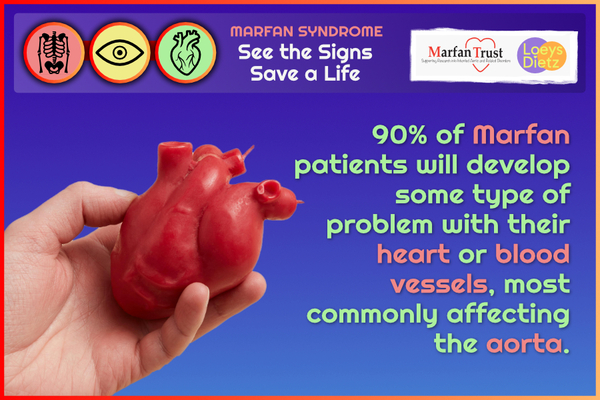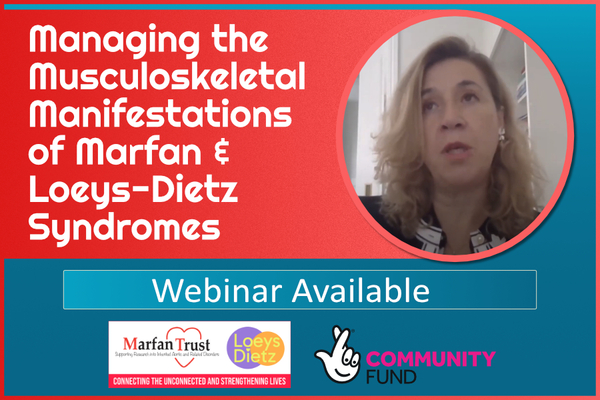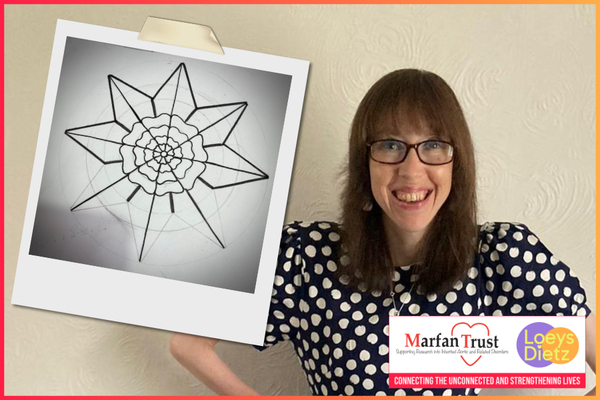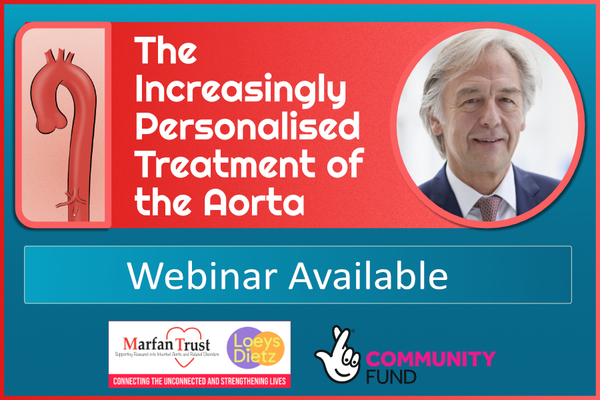Just as everyone is different, so every Marfan patient is unique, each one affected differently by their condition. However, the majority - around 90% - will develop some degree of trouble with their heart, aorta & blood vessels. Here is our helpful guide to Marfan and the Heart:
Creating the beat of life are the valves of your heart. The heart is a perfect pump, reliant upon four valves that open and close like doors in precise sequence, to keep the blood flowing around the body in a strict one-way system. Two of the four are the Mitral and Aortic valves...
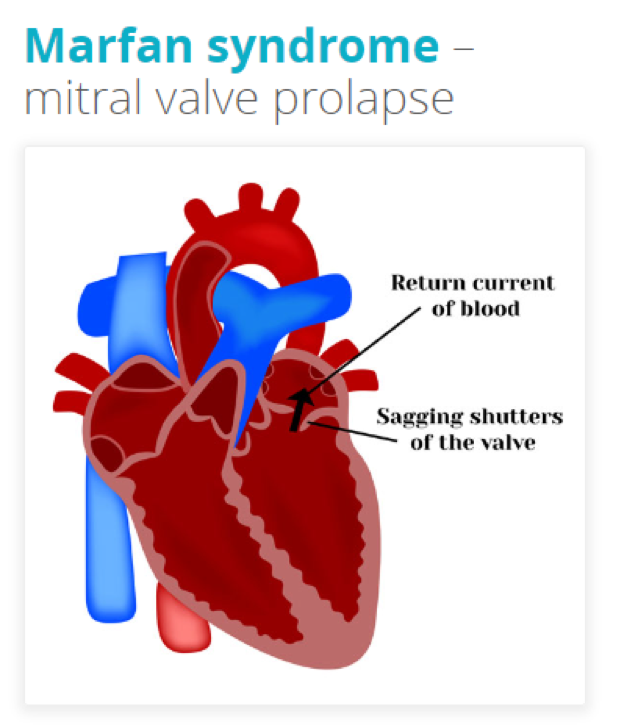
In Marfan syndrome, the most common problem we see is mitral valve prolapse which can lead to leaking of the valve known as regurgitation.
The mitral valve is found on the left side of the heart and sits between the left atrium (upper chamber receiving oxygenated red blood from the lungs) and the left ventricle (lower chamber that pumps the oxygenated red blood around the body via the aorta).
What is mitral valve prolapse? Often known as floppy mitral valve.
Weakened connective tissue found in Marfan syndrome can affect the mitral valve and this causes the two leaflets of the valve to billow or parachute upwards into the upper chamber (left atrium) instead of staying at the same level whilst the heart beats. This is one of the things your cardiologist will be keeping an eye on during your routine echocardiogram.
If a diagnosis of Marfan syndrome is being considered this will be something your doctors are checking for.
What is mitral valve regurgitation (MVR)?
The weakened tissue of the mitral valve can mean that as well as parachuting upwards into the left atrium, the valve leaflets can stop closing together properly, allowing some blood to flow the wrong way, leaking from the left lower pumping chamber (the left ventricle) back into the upper chamber rather than out into the aorta to the body.
If the MVR is mild your cardiologist will keep an eye on this with scans to ensure it does not change. If the MVR becomes more severe, with more blood flowing the wrong way, the heart must work harder to pump sufficient oxygenated blood around the body and the upper chamber of the heart can become dilated due to increased pressure. Overtime, without treatment this can cause heart failure. Usually if the leak is mild it is just monitored. If it increases the first line of treatment is medication.
Surgery may be indicated to fix the problem if the leak is severe . Sometimes the mitral valve can be repaired, sometimes it needs to be replaced with a mechanical valve.
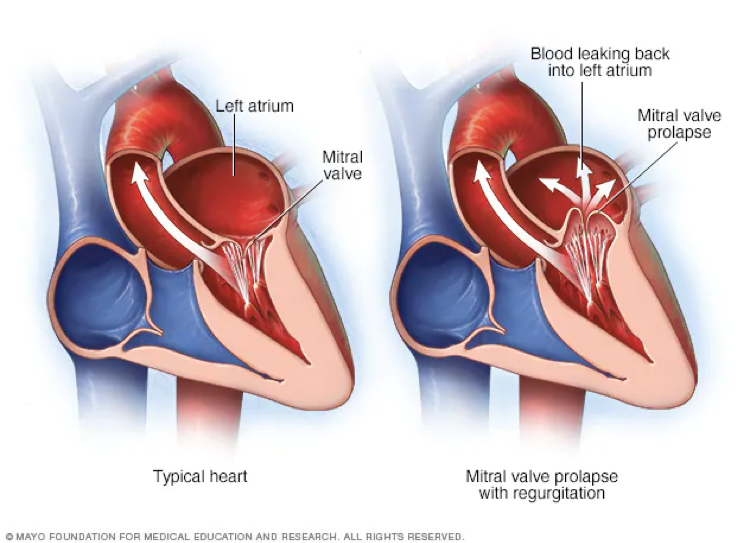
Signs and Symptoms
- Irregular heartbeat
- Shortness of breath
- Swollen feet or ankles
- Heart murmur (that can be heard by your doctor when listening to your heartbeat)
- Failure to gain weight and grow in a child
Echocardiograms (ultrasound scans of the heart) are used to check on the structure and function of the valves in the heart and are an excellent tool to monitor changes in the valves over time. These are an important part of surveillance for Marfan syndrome.
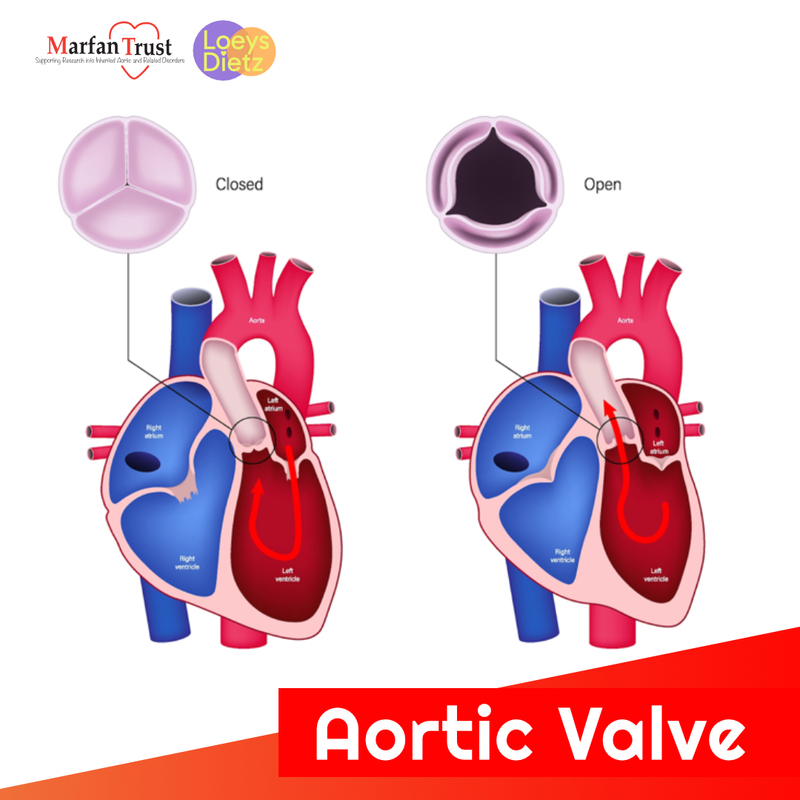
AORTIC VALVE
[pictured: Aortic Root Ascending Aorta]
The aortic root and ascending aorta are most frequently associated with dilatation and aneurysm formation in Marfan syndrome, this diagram shows how the aortic valve sits at the bottom of the aortic root. Sometimes, if the aorta has become very dilated, the aortic valve can also be stretched and doesn’t close properly, causing a leaky valve with blood able to flow backwards into the left ventricle. This is known as aortic regurgitation, there are other causes of aortic regurgitation too.
Aortic Stenosis
With great advances in treatments, most people with Marfan syndrome are now living long lives. This is a wonderful leap forward, but it means that the issues of old age become more relevant. The aortic valve can become stiffened and calcified as we age so it can struggle to open and close properly, meaning the heart must work much harder to pump against a stiff valve, this is called aortic stenosis. It can cause serious symptoms which include shortness of breath, chest pain and dizziness or fainting.
Patients with Marfan syndrome will be having regular surveillance echocardiograms to keep an eye on their heart function and the size of their aorta. The echo allows your doctor to assess the function of the aortic valve and ensure that it is opening and closing well.
Problems with the aortic valve can be fixed with surgery and in some cases with a keyhole procedure. Sometimes the valve can be repaired but often it must be replaced with a tissue or mechanical valve.
If a patient needs aortic surgery, this sometimes involves replacement of the aortic valve too. These decisions are made on an individual basis once your surgeon has all the information that they need to decide which type of surgery would be best for you. They will discuss this with you and give you the opportunity to ask questions so you can make an informed decision about your treatment.
AORTIC DISSECTION
Aortic dissection is the most serious complication that people with Marfan syndrome can suffer. Missed diagnosis still costs lives.
The Marfan Trust along with other charities work tirelessly to raise awareness of aortic dissection. But awareness is also needed amongst the general public as well as in health professionals, to recognise the signs, so that they ‘Think Aorta’ and request the right test at the right time.
Signs of an Aortic Dissection
The symptoms below are those that may signal or indicate an aortic dissection:
Symptoms
· Pain (chest, neck, back, abdomen)
· Numbness in limbs
· Collapse
Type of pain
· Very sudden onset
· Can come and go
· Pain can be described as ripping or tearing
Risk Factors
· Connective tissue disorders (like Marfan syndrome, Loeys-Dietz syndrome)
· Family history of aortic dissection
· Known aortic aneurysm
· High blood pressure
Carrying an alert card is one way to ensure your heightened risk of aortic dissection is evident to health professionals. You can also include medical alert information on your smartphone.

